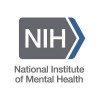
A Medication Trial Combined With Behavior Therapy for Individuals With Obsessive-compulsive Disorder...
Obsessive-Compulsive DisorderThis study examines the efficacy of the medication D-Cycloserine in the reduction of obsessions and compulsions in individuals with obsessive-compulsive disorder (OCD). All study participants will receive Exposure and Response Prevention, a common form of behavior therapy for individuals with OCD. Half (50%) of the participants will be randomly assigned to the placebo condition and the other half (50%) will be randomly assigned to receive D-Cycloserine. Because all participants will receive 10 sessions of behavior therapy, all participants are expected to improve from this treatment.

Memantine Augmentation in Obsessive-Compulsive Disorder
Obsessive-Compulsive DisorderThe purpose of this study is to determine whether memantine is safe and effective when used as an augmentation to standard treatment for Obsessive-Compulsive Disorder (OCD).

Preventive Measures for Childhood-Onset Obsessive-Compulsive Disorder and Tic Disorders (PANDAS...
Mental Disorder Diagnosed in ChildhoodObsessive Compulsive Disorder2 moreA subgroup of patients with childhood-onset obsessive-compulsive disorder (OCD) and/or tic disorders has been identified who share a common clinical course characterized by dramatic onset and symptom exacerbations following group A beta-hemolytic streptococcal (GABHS) infections. This subgroup is designated by the acronym PANDAS (Pediatric Autoimmune Neuropsychiatric Disorders Associated with Streptococcal infections). There are five clinical characteristics that define the PANDAS subgroup: presence of OCD and/or tic disorder; prepubertal symptom onset; sudden onset or abrupt exacerbations (relapsing-remitting course); association with neurological abnormalities (presence of adventitious movements or motoric hyperactivity during exacerbations); and temporal association between symptom exacerbations and GABHS infections. In this subgroup, periodic exacerbations appear to be triggered by GABHS infections in a manner similar to that of Sydenham's chorea, the neurological variant of rheumatic fever. Rheumatic fever is a disorder with a presumed post-streptococcal autoimmune etiology. The streptococcal pathogenesis of rheumatic fever is supported by studies that have demonstrated the effectiveness of penicillin prophylaxis in preventing recurrences of this illness. A trial of penicillin prophylaxis in the PANDAS subgroup demonstrated that penicillin was not superior to placebo as prophylaxis against GABHS infections in these children, but this outcome was felt to be secondary to non-compliance with treatment, and there was no decrease in the number of neuropsychiatric symptom exacerbations in this group. In a study comparing azithromycin and penicillin, both drugs were completely effective in preventing streptococcal infections - there were no documented titer elevations during the year-long study period for children taking either penicillin or azithromycin. Comparable reductions in the severity of tics and obsessive-compulsive symptoms were also observed. Thus, penicillin was not performing as an "active placebo" as originally postulated, but rather provided effective prophylaxis against Group A beta-hemolytic streptococcal. Both azithromycin and penicillin appear to be effective in eliminating GABHS infections, and reducing neuropsychiatric symptom severity; thus, between-group differences are negligible. Since increasing the "n" to demonstrate superiority of one prophylactic agent over another would be impractical, we have amended the study design to address two issues: To determine if antibiotics prophylaxis against GABHS infections is superior to placebo in prolonging periods of remission among children in the PANDAS subgroup. To determine if antibiotics prophylaxis against GABHS infections is superior to placebo in improving overall symptom severity for obsessive-compulsive symptoms and tics among children in the PANDAS subgroup. Because penicillin has a narrower therapeutic index and is less expensive than azithromycin, it is the preferable prophylactic agent. Further, penicillin (250 mg orally twice a day) has a long history of providing safe and effective prophylaxis for rheumatic fever and is the first line oral therapy recommended by the American Heart Association. Thus, penicillin has been chosen as the prophylactic antibiotic in the present study. Blister packs are used to increase compliance and to allow for easier documentation of missed doses.

Treatment of Obsessive-Compulsive Disorder (OCD) in Children
Obsessive-Compulsive DisorderThe purpose of this study is to compare 3 treatments for children with OCD: medication (sertraline, SER) alone vs OCD-specific therapy (Cognitive Behavior Therapy, CBT) vs medication plus therapy. Some patients will receive an inactive placebo (PBO) instead of medication and/or Educational Support (ES, non-psychological treatment) instead of therapy. One in 200 children suffer from OCD, but few receive appropriate treatment. Both CBT and medication seem to be effective, but their effectiveness, alone and in combination, has not been evaluated. There are 2 phases to this trial. In Phase I the child will receive 1 of the following 6 treatments for 12 weeks: 1) SER alone; 2) pill PBO alone; 3) CBT alone; 4) SER plus CBT; 5) SER plus ES; 6) pill PBO plus ES. If the child responds to treatment, he/she will go on to Phase II in which the treatment will be slowly reduced, then stopped (discontinued), over time to test the treatment's durability. The child will be evaluated at Weeks 1, 4, 8, 12 (Phase I treatment), and Weeks 16, 20, 24, and 28 (Phase II discontinuation) to see how effective and durable the treatment is in treating your child's OCD. A child may be eligible for this study if he/she: Has obsessive-compulsive disorder (OCD) and is 8 - 16 years old.

Internet-based vs Face-to-face Cognitive Behavioural Therapy for Obsessive-compulsive Disorder
Obsessive-compulsive DisorderRandomized controlled non-inferiority trial comparing therapist-guided Internet-based Cognitive behavioral therapy (ICBT), self-guided ICBT, and individual face-to-face (f2f) CBT for Obsessive-Compulsive Disorder (OCD) in adults. The primary objective is to evaluate whether ICBT is a non-inferior treatment option compared to the best possible available treatment for OCD, individual face to face (f2f) CBT. A second objective is to compare the efficacy of self-guided vs. therapist-guided ICBT. As this question has cost implications for the health system, a third objective is to carry out a health economic evaluation of both forms of ICBT, in relation to the gold standard f2f CBT. A fourth objective is to explore whether ICBT is equally suited for clinic-referred cases compared to self-referred patients. Finally, a fifth objective is to investigate whether genetic markers, in combination with clinical variables, can be employed to predict treatment outcomes with CBT in general. Research Questions: Q1: Is therapist-guided internet-based CBT (ICBT) for OCD non-inferior to face-to-face (f2f) CBT with regard to OCD symptoms, function and quality of life? Q2: Is entirely self-guided ICBT non-inferior to f2f CBT with regard to OCD symptoms, function and quality of life? Q3: Is ICBT a cost-effective treatment, compared to f2f CBT? Q4: Is there a difference in treatment outcome between self-referred and clinical referred patients? Q5: Can clinical variables and genetic markers be useful to predict which patients will benefit from CBT?

Physical Exercise in OCD: Treatment Efficacy, Additive Benefits to CBT, and Cognitive Correlates...
Obsessive-Compulsive DisorderCognition DisordersObsessive compulsive disorder (OCD) is a severe and debilitating anxiety disorder afflicting 2% of the population. Cognitive behavioural therapy (CBT) is considered first line psychological treatment for OCD, but there are a large number of treatment non-responders, and the majority of responders have residual symptoms. Aerobic exercise has shown potential benefit for general mood and anxiety disorders, but has not been widely tested in OCD. This study will examine the additive benefits of a standard 12-week aerobic exercise program to a standard 12-week CBT protocol in the treatment of OCD. The study will test if Exercise+CBT results in significantly better clinical outcomes compared to either treatment alone or no treatment at all. Treatment outcomes will be assessed in relation to symptom and cognitive measures of clinical improvement.

Attention Training for Childhood Obsessive Compulsive Disorder: An Open Case Series
Obsessive Compulsive DisorderPediatric Obsessive Compulsive Disorder (OCD) is a chronic, impairing condition that accrues significant concurrent and long-term risk to affected youth. Although empirically supported psychosocial and pharmacological treatments for OCD exist, many children and their families are not able to adequately access these treatments or derive only partial benefit from them. Such findings highlight the importance of developing more effective treatment options which have the potential to be widely accessible to OCD youth. The investigators are proposing to test a computerized attention modification program, AMP, in six youth with OCD in an open case series to gather information regarding protocol acceptability, feasibility and preliminary efficacy. This phase includes the development and refinement of stimuli selection procedures, behavior avoidance task, EEG protocol, and AMP parameters for use with children. Following ascertainment of study eligibility, participants will undergo a baseline assessment consisting of a clinical interview, neurocognitive assessments, EEG, attention bias assessment, and self report questionnaires. Study participants will then receive 12 sessions of AMP treatment over the course of three weeks. All youngsters and their families will be reassessed at treatment endpoint (week 4). Participation will take a total of about 24 hours over the course of six weeks. Participants who are treatment responders may be asked to return approximately 3 months after completing treatment for a follow-up assessment. Preliminary hypotheses: 1) AMP will be acceptable to youth and families and feasible to administer; 2) Youth receiving AMP will demonstrate decreases in threat bias and OCD symptom severity.

A Study of Bitopertin (RO4917838) in Combination With Selective Serotonin Reuptake Inhibitors (SSRIs)...
Obsessive-Compulsive DisorderThis multicenter, randomized, double-blind, parallel-group, placebo-controlled study will evaluate the efficacy and safety of bitopertin in combination with SSRI in participants with obsessive-compulsive disorder. Participants will be randomized to receive either bitopertin 30 milligrams (mg) or bitopertin 10 mg or placebo orally daily in addition to their background therapy with an SSRI. Participants will be allocated to one of two strata. Participants in Stratum 1 will start study drug on Day 1. Participants in Stratum 2 will receive placebo from Day 1 (placebo lead-in) and will then start study drug at the Week 2 visit. Participants in both strata will receive the study drug in addition to their background therapy with an SSRI until Week 16.

Assessing Models of Exposure Therapy
Obsessive-compulsive Disorders and SymptomsThe objective of this study is to learn how to improve treatment for clients who are working hard in treatment at the McLean Hospital Obsessive Compulsive Disorder Institute (OCDI), but who are not making the progress that would typically be expected. Therefore, the investigators will be comparing the performance of such clients in a treatment as usual (TAU)-Exposure and Response Prevention (ERP) session with their performance in an Acceptance and Commitment Therapy (ACT)-focused ERP session that follows an ACT booster session. The investigators hypothesize that clients will perform significantly better in the ACT-focused ERP session than they will in the TAU-ERP session. More specifically, the investigators hypothesize that clients and an independent rater will report that in the ACT-focused ERP session, clients performed significantly fewer rituals and/or avoidance behaviors, experienced comparable levels of distress, exerted significantly more effort, had significantly less difficulty getting started with the ERP, were significantly less influenced by their uncomfortable thoughts/feelings, were significantly more willing to experience discomfort, were significantly more focused on working towards what is important to the client. The investigators also hypothesize that an independent rater will rate clients as significantly more compliant with the ACT-focused ERP session than with the TAU-ERP session. The investigators also hypothesize that clients will rate the ACT-focused ERP session as significantly more preferable and acceptable than the TAU-ERP session, and that they will report being significantly more willing to do the ACT-focused ERP session again.

Transdiagnostic Psychotherapy for Veterans With Mood and Anxiety Disorders
Major Depressive DisorderPersistent Depressive Disorder6 moreCognitive behavioral therapy (CBT) is a brief, efficient, and effective psychotherapy for individuals with depressive and anxiety disorders. However, CBT is largely underutilized within Veteran Affairs Medical Centers (VAMCs) due to the cost and burden of trainings necessary to deliver the large number of CBT protocols. Transdiagnostic CBT, in contrast, is specifically designed to address numerous distinct disorders within a single protocol. This transdiagnostic approach has the potential to dramatically improve the accessibility of CBT within VAMCs and therefore improve clinical outcomes of Veterans. The proposed research seeks to evaluate the efficacy of a transdiagnostic CBT by assessing clinical outcomes and quality of life in VAMC patients with depressive and anxiety disorders throughout the course of treatment and in comparison to an existing evidence-based psychotherapy, behavioral activation treatment.
